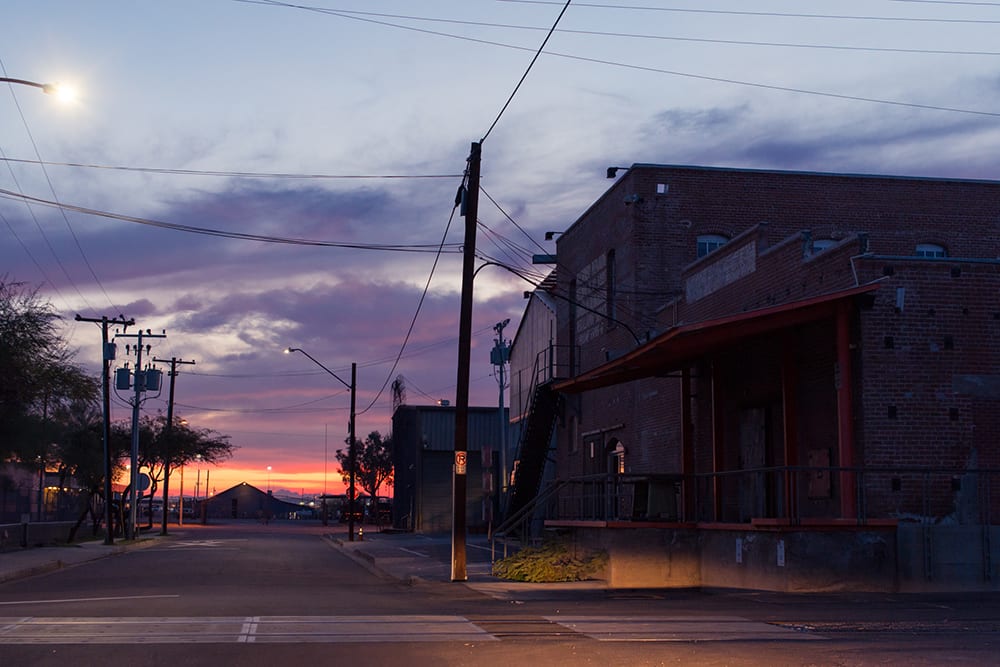
The Levine Machine in the Warehouse District. (Photo: NBMA Photography)
No longer just a swath of parking lots and abandoned buildings, some think the Warehouse District has finally reached a tipping point thanks to a growing number of dedicated building owners, venues, and creative, entrepreneurial companies.
About a year ago, those businesses and property owners banded together with a mission to see the area thrive — and the Warehouse District Council was born.
Made up of more than 20 people, the organization focuses on initiatives that will showcase the district’s distinct characteristics, and augment the number of dedicated businesses and residents moving in.
The board of the Warehouse District Council includes representatives, owners and executives from R&R Partners, WebPT, Bentley Projects, Cowley Companies, Phoenix Suns, Hansji and Job Corps, as well as Councilwoman Kate Gallego and city staff.
“It’s really helped us get out there and get the message going that the Warehouse District is alive and well,” said Brian Cassidy, president of
CCBG Architects and chair of the Council’s board. “That’s why we formed the Council — to get organized, to give a voice to the area.”

The Warehouse District logo designed by R&R Partners for the Warehouse District Council. (Photo: Brandi Porter)
Programs for signage, tours and business memberships are already in the works, which he said the group will use to increase public awareness about the area.
And while many old warehouses were demolished, the Council can use newly renovated spaces like R&R Partners and the Scheduling Institute to demonstrate what’s possible.
Their vision: to shape a walkable downtown neighborhood with businesses, entertainment venues, parks and housing.
“I see this as a true mixed-use area that has people living, working and playing,” Cassidy said.
And while a number of visions for the area have failed over the years, this time is different, according to David Krietor, president and CEO of
Downtown Phoenix Inc. (DPI). For the first time, there’s a community of people to support it.
“The creation of the Warehouse District Council, and the people that they’ve aggregated into the group, is really powerful,” he said. “There’s a center of gravity in the Warehouse District among real people running real businesses. I think they’re positioned for a strong future.”
In fact, Krietor said the new activity is reminiscent of what happened in Roosevelt Row 15 years ago, albeit with different objectives and types of businesses. He expects the Warehouse District will contribute to the broader character of downtown in a similar way that Roosevelt Row and Grand Avenue have.
First, the Warehouse District Council has a few administrative tasks to settle. The group is in the process of creating a website and branding themselves as a downtown neighborhood — but they’re paving the way for positive growth.



